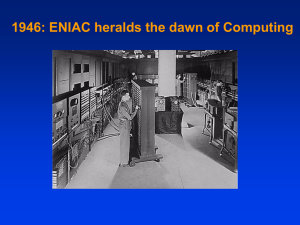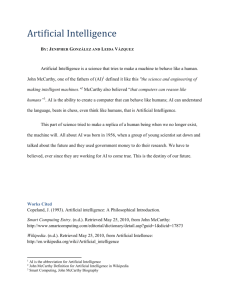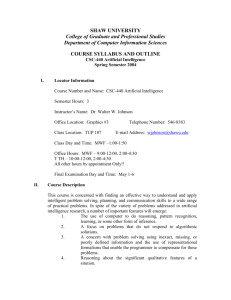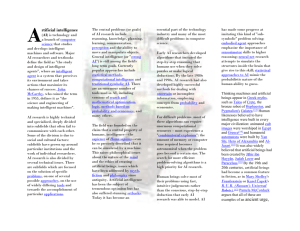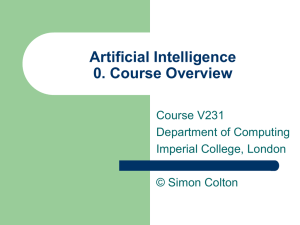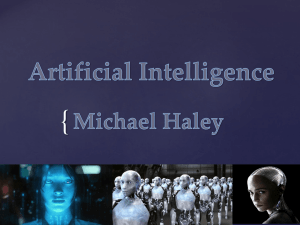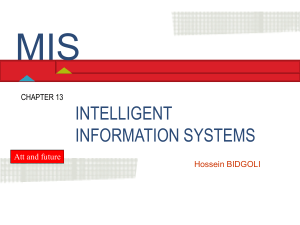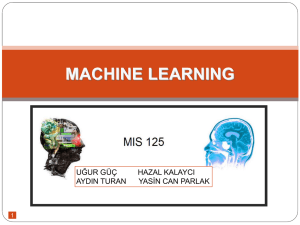lecture 1
advertisement
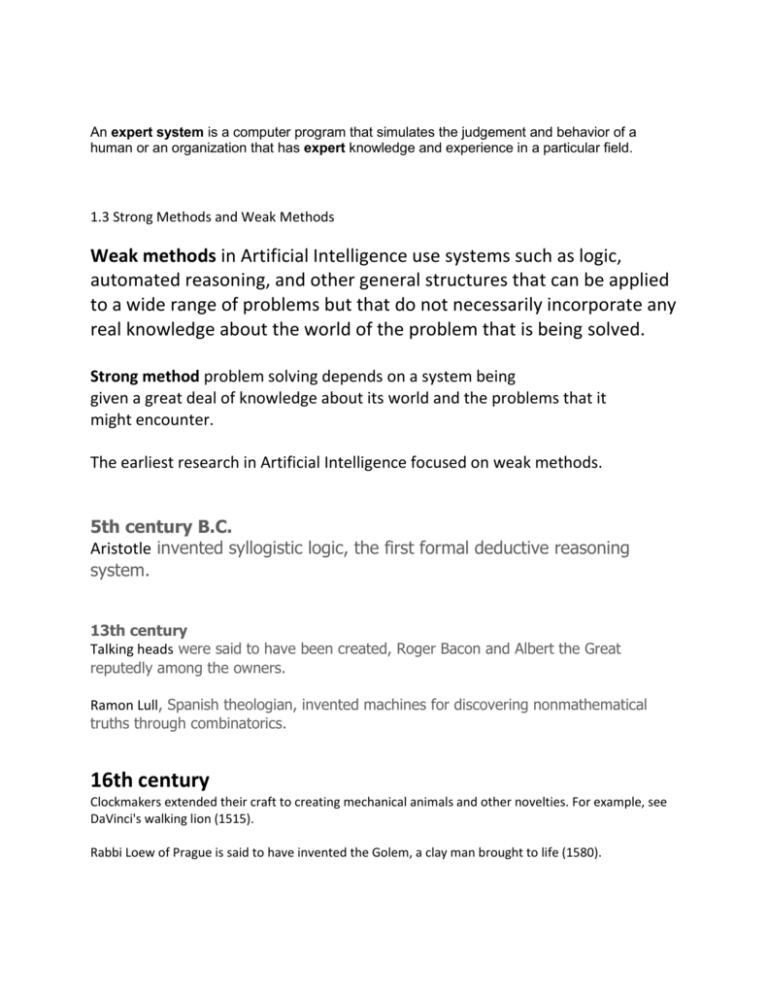
An expert system is a computer program that simulates the judgement and behavior of a human or an organization that has expert knowledge and experience in a particular field. 1.3 Strong Methods and Weak Methods Weak methods in Artificial Intelligence use systems such as logic, automated reasoning, and other general structures that can be applied to a wide range of problems but that do not necessarily incorporate any real knowledge about the world of the problem that is being solved. Strong method problem solving depends on a system being given a great deal of knowledge about its world and the problems that it might encounter. The earliest research in Artificial Intelligence focused on weak methods. 5th century B.C. Aristotle invented syllogistic logic, the first formal deductive reasoning system. 13th century Talking heads were said to have been created, Roger Bacon and Albert the Great reputedly among the owners. Ramon Lull, Spanish theologian, invented machines for discovering nonmathematical truths through combinatorics. 16th century Clockmakers extended their craft to creating mechanical animals and other novelties. For example, see DaVinci's walking lion (1515). Rabbi Loew of Prague is said to have invented the Golem, a clay man brought to life (1580). 17th century Early in the century, Descartes proposed that bodies of animals are nothing more than complex machines. Many other 17th century thinkers offered variations and elaborations of Cartesian mechanism. Pascal created the first mechanical digital calculating machine (1642). Thomas Hobbes published The Leviathan (1651), containing a mechanistic and combinatorial theory of thinking. Leibniz improved Pascal's machine to do multiplication & division with a machine called the Step Reckoner (1673) and envisioned a universal calculus of reasoning by which arguments could be decided mechanically. 18th century The 18th century saw a profusion of mechanical toys, including the celebrated mechanical duck of Vaucanson and von Kempelen's phony mechanical chess player, The Turk (1769). For Edgar Allen Poe's description of the Turk. 19th century Luddites (led by Ned Ludd) destroyed machinery in England (1811-1816). Mary Shelley published the story of Frankenstein's monster (1818). George Boole developed a binary algebra representing (some) "laws of thought," published in The Laws of Thought. Charles Babbage & Ada Byron (Lady Lovelace) designed a programmable mechanical calculating machines. A working model was built in 2002; 20th century - First Half Karel Capek's play "R.U.R." (Rossum's Universal Robots) produced in 1921 (London opening, 1923). - First use of the word 'robot' in English. Warren McCulloch & Walter Pitts publish "A Logical Calculus of the Ideas Immanent in Nervous Activity" (1943), laying foundations for neural networks. A.M. Turing published "Computing Machinery and Intelligence" (1950). - Introduction of Turing Test as a way of operationalizing a test of intelligent behavior. Isaac Asimov published his three laws of robotics (1950). In 1956, the term Artificial Intelligence was first used by John McCarthy at a conference in Dartmouth College, in Hanover, New Hampshire. In 1957, Newell and Simon invented the idea of the GPS, whose purpose was, as the name suggests, to solve almost any logical problem. In 1958,McCarthy invented the LISP programming language, which is still widely used today in Artificial Intelligence research. 1.6 The 1960s to the 1990s The aim of the study of Artificial Intelligence is no longer to create a robot as intelligent as a human, but rather to use algorithms, heuristics, and methodologies based on the ways in which the human brain solves problems. Hence, systems have been designed such as Thomas Evans’ Analogy and Melanie Mitchell’s Copycat Architecture, which were designed to be able to solve problems that involve analogies. Mitchell’s Copycat, for example, can solve problems such as “ABC is to CBA as DEF is to ???.”



